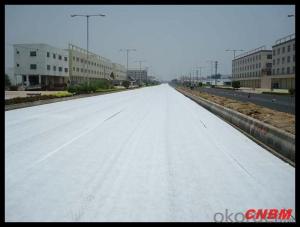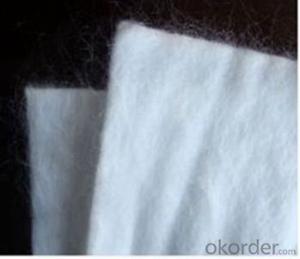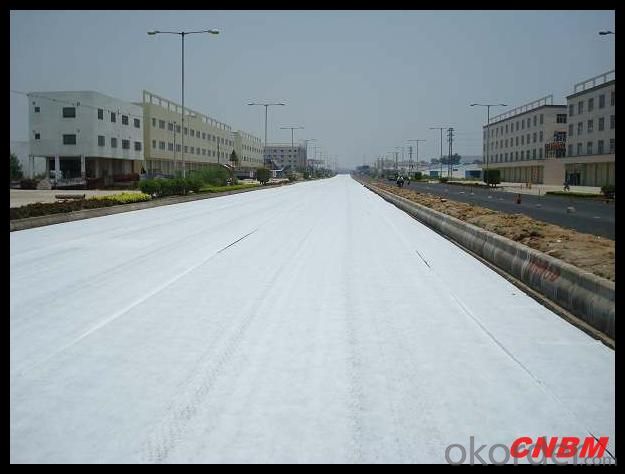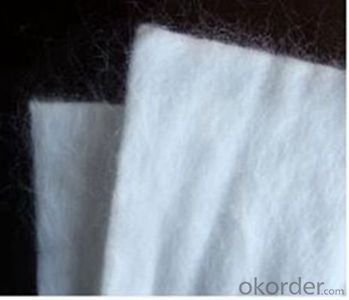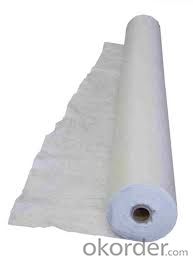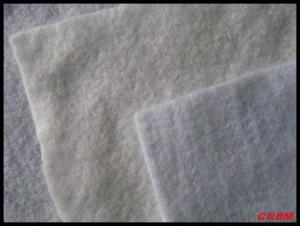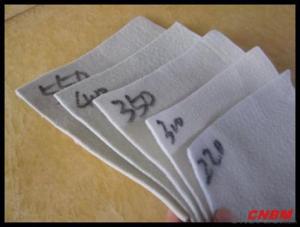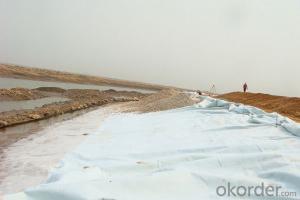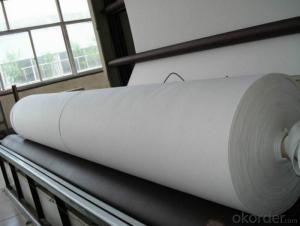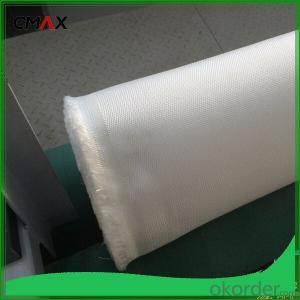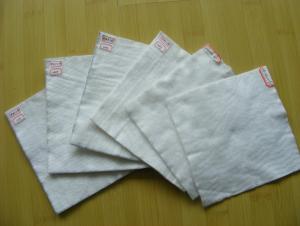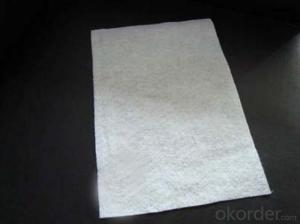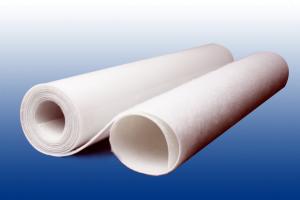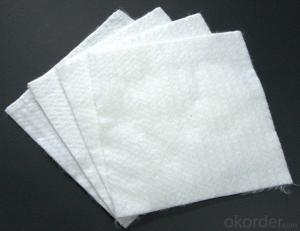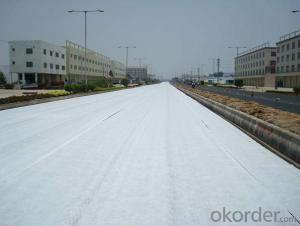Non Woven Geotextile Fabric - China Factory Permeable Geotextile
- Loading Port:
- China main port
- Payment Terms:
- TT OR LC
- Min Order Qty:
- 2000 m²
- Supply Capability:
- 1000000 m²/month
OKorder Service Pledge
OKorder Financial Service
You Might Also Like
Specification
Geo-textile is usually used for filtration, isolation, reinforcement or preservation, with the characteristics of high tensile
1. Hydraulic Engineering: Inverse filtering & protection in reservoir dam, earth rock cofferdam, tunnel, gutter way, etc; Protection for impervious layer in artificial lake, river-way, reservoir, etc;
2. Road Works: Drainage work in retaining wall, road side slope, roadbed, under-layer of railway & airfield runway
Density | Thickness | Breaking Strength | Elongation of Fracture | CBR Bursting Strength | Vertical Penetration Parameter | Equivalent Aperture |
g/m2 | mm | KN/m | % | KN | cm/s | O95mm |
65 | 1.2 | 2.8 | 40 ~ 80 | 0.7 | K x (10-1 ~ 10-3) (K = 1.0 ~ 9.9) | 0.07 ~ 0.2 |
75 | 1.4 | 3.3 | 0.8 | |||
100 | 1.6 | 5.0 | 0.95 | |||
150 | 1.52 | 7.5 | 1.5 | |||
160 | 2.0 | 8.5 | 1.60 | |||
200 | 2.4 | 11 | 2.10 | |||
250 | 2.8 | 14 | 2.60 | |||
300 | 3.4 | 16 | 3.20 | |||
400 | 4.0 | 21 | 4.0 | |||
500 | 4.5 | 25 | 4.8 |
 Packaging & Shipping
Packaging & Shipping
Packing: PLASTIC FILM INSIDE, AND WOVEN BAG OUTSIDE
Shipping: About 15 days after receipt the deposit
pecifications
geotextile fabric
permeability,filtration,easy for construction
ISO and CE certificate
Good quality and competitive price
Our Service
Quality assurance
1.On a regular basis or as per your request,we entrust national testing agencies to conduct quality inspections
2. Strictly in accordance with the ISO9001-2008 international quality system standard,we monitor and manage the whole process throughout production,quality testing,and measurement to ensure product quality
3. For quality-related construction delay or substandard construction(except for damage or losses due to customer’s responsibility or irresistible natural disasters),we have refunding,replacement,and repair services.We will respond to customers’ feedbacks on quality issues within 24 hours.
After-sales service
1.In order to provide customers with comprehensive technical support,we will provide technical and other related information upon request in a timely manner.
2.In required,we will appoint specialized technicians to the construction site to give technical trainings to construction people,and offer technical guidance throughout the whole construction process.
3.For damage due to shipment and delivery,after we receive the complaint,we will check the issure through provided pictures and videos.If our responsibility is confirmed,we wil offer free replacement.
4.When the construction is completed,as your request,our technical staff may participate in the final acceptance.
FAQ:
Q: What kind of payments does jenor support?
A: T/T, L/C, Cash are accepted.
Q: Do you charge for the samples?
A: Accordeing to our company policy, the samples are free, we only charge the freight fee. And we will return the freight fee during the next order.
Q: Can you produce according to customers' design?
A: Sure, we are professional manufacturer, OEM and ODM are both welcome.
Q: Do you have other products?
A: Yes, please check the pictures:
- Q: Can geotextiles be used for reinforcement of embankments?
- Yes, geotextiles can be used for reinforcement of embankments. Geotextiles are commonly used as a separation, filtration, and reinforcement material in civil engineering applications. They can be placed between the soil layers to improve stability, prevent soil erosion, and enhance the overall strength of embankments.
- Q: Can geotextiles be used in green infrastructure projects?
- Yes, geotextiles can be used in green infrastructure projects. They are commonly used to reinforce soil, control erosion, and promote the growth of vegetation in various green infrastructure applications such as rain gardens, bioswales, and green roofs.
- Q: How do geotextiles prevent soil erosion on slopes?
- Geotextiles prevent soil erosion on slopes by providing a protective barrier that stabilizes the soil and prevents it from being washed away by water runoff. They help to distribute the weight of rainfall evenly across the slope, reducing the erosive force and promoting water infiltration into the soil. Additionally, geotextiles retain sediment particles, preventing their movement and maintaining the integrity of the slope.
- Q: How do geotextiles affect soil temperature?
- Geotextiles can help regulate soil temperature by acting as an insulating layer. They can reduce heat loss during colder months and prevent excessive heat absorption during hotter months, thus creating a more stable and favorable temperature for plant growth.
- Q: Geotextile how much money
- Specifications of different quality prices ranging from geotextiles from November last year to the current price rose too much
- Q: What is the number of tensile units for geotextiles
- Geotextile stretch unit number: width of 1 m geotextile in a certain force under the rupture of the strong value. KN / m
- Q: Precautions for Polyester Filament Geotextiles
- 1. Geotextiles can only be cut with a geotextile (hook knife), such as in the field of cutting, other materials to take special protective measures to prevent the cutting of geotextiles and its unnecessary damage; Laying geotextile at the same time, must take all necessary measures to prevent damage to the following layer of material; 3. In the laying of geotextiles, we must pay attention not to let the stone, a lot of dust or moisture may damage the geotextile, Drains or filters, or materials that may cause difficulties for subsequent connections to enter beneath geotextiles or geotextiles; 4. After installation, visualize all geotextile surfaces to identify all damaged landlords Marking and repairing, to determine the laying of the surface can not cause damage to foreign substances, such as broken needle and other foreign body; 5. Geotextile connection must follow the following provisions: Under normal circumstances, the slope can not have a horizontal connection (connection along the slope The contours do not intersect with them), except where the patch is located. 6. If the use of suture, suture should be used with geotextile material the same or more than the material, suture should be anti-chemical UV material holding. Suture and geotextile should have a significant color difference in order to facilitate inspection. 7. Special attention to suturing during installation to ensure that no gravel in the soil or gravel cover is in the middle of the geotextile.
- Q: Can geotextiles be used for shoreline protection?
- Yes, geotextiles can be used for shoreline protection. They are commonly used to stabilize coastal areas and prevent erosion by acting as a barrier against wave action and water currents. Geotextiles help to retain sediment and provide structural support, making them an effective solution for shoreline protection projects.
- Q: Are geotextiles suitable for use in geogrid reinforced soil slopes?
- Yes, geotextiles are suitable for use in geogrid reinforced soil slopes. Geotextiles are commonly used in combination with geogrids to enhance the stability and performance of reinforced soil slopes. Geotextiles provide additional reinforcement, filtration, and separation functions, improving the overall effectiveness and durability of the slope system.
- Q: What are the design considerations for geotextile-reinforced retaining walls?
- Some design considerations for geotextile-reinforced retaining walls include the selection of appropriate geotextile material, determining the required strength and stability of the wall, evaluating the soil conditions and potential loads, considering the water drainage and filtration requirements, ensuring proper installation techniques, and factoring in long-term maintenance and monitoring.
Send your message to us
Non Woven Geotextile Fabric - China Factory Permeable Geotextile
- Loading Port:
- China main port
- Payment Terms:
- TT OR LC
- Min Order Qty:
- 2000 m²
- Supply Capability:
- 1000000 m²/month
OKorder Service Pledge
OKorder Financial Service
Similar products
Hot products
Hot Searches
Related keywords
